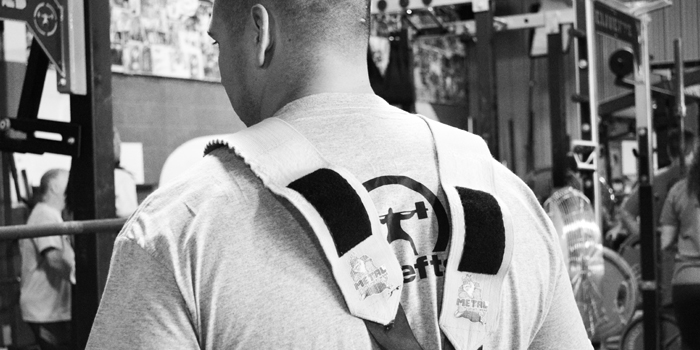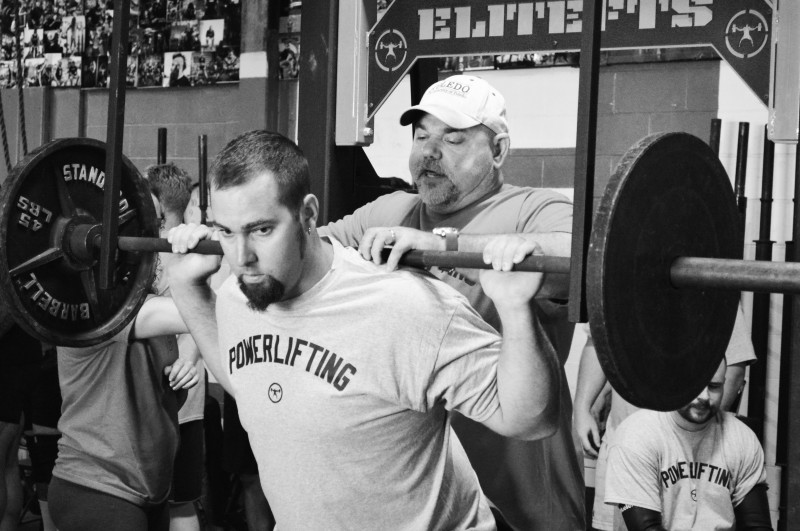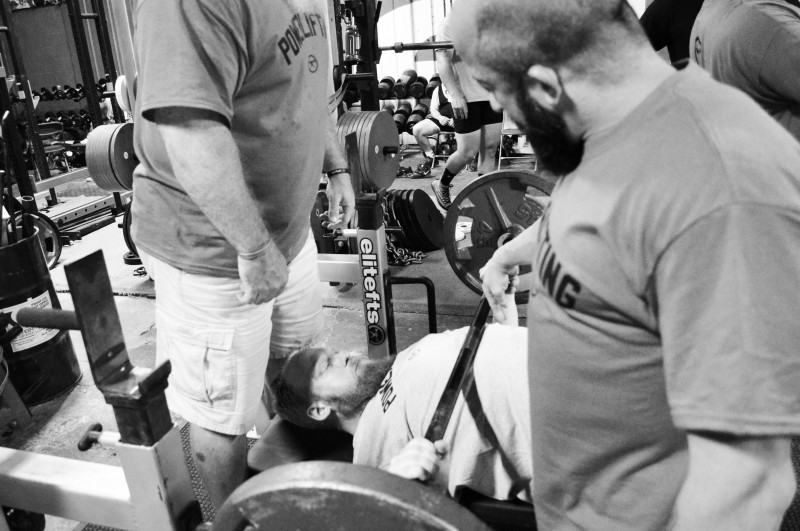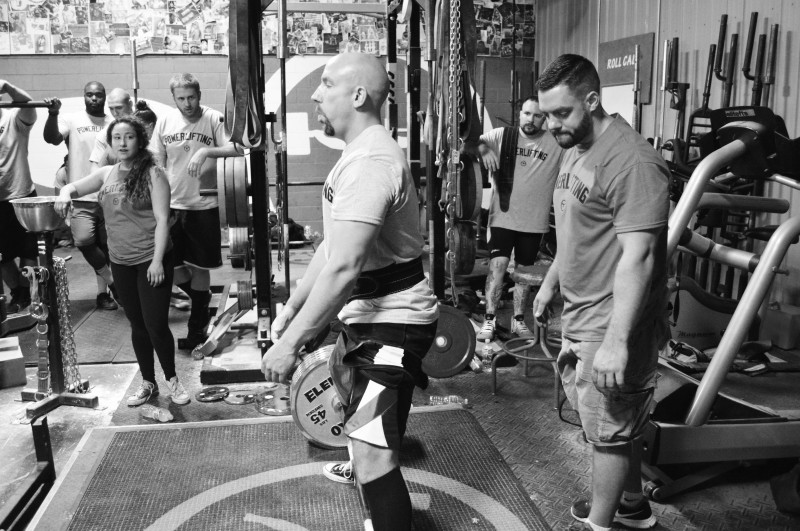
The intended audience for this article, like the first part, is for those new to lifting, those past their physical peak, those who are injury prone, those who are untrained in all things athletic, and those who are deconditioned because they stopped trying. The goal of this article is to instruct in the art of longevity in training by helping establish good training habits.
In the first part of this article I made the following suggestions:
- Just because you can doesn’t mean you should: Don’t spend your capacity and capability on high risk/low benefit feats of strength for fun.
- Stay hungry: Leave some gas in the tank and some desire unfulfilled so you are chomping at the bit to get to your next session.
- Find the sweet spot: Use mostly submaximal weight, occasionally adventure into circa max, and infrequently test your 1RM.
To execute all of this advice properly, do the following:
- Follow a well thought out program: Think ahead and plan your progress.
- Listen to a wise coach: Benefit from other people’s experience.
- Use common sense: Got a pinched nerve in your low back and you have generally bad form? Probably not a max effort deadlift day.
I attribute my progress in the last two years of barbell training post injury/post stupid human tricks to the use of these guidelines. One thing I learned is that improving health and performance is sometimes a matter of getting out of our own way. I found that people sometimes succeed in spite of their lifestyle rather than because of it. Creating some rules and organization for training, a training process, is an effective method to getting out of our own way. In other words, the body and mind want to grow, to become stronger, and this is my way of letting that happen.
Here are three more guidelines to incorporate into your training:
1. Use the minimum effective dose for your goal.
Fatigue, injury, and imbalances accumulate just like strength and conditioning adaptations do. Your adaptations are dose dependent just like taking medicine. You only need so much to elicit an effect, then it just becomes poisonous. I used to take 800 milligrams of ibuprofen. Then I heard that it increases the chance of heart attack and stresses the liver. So I tried a smaller dose and found it does the same job but with less risk. Now I take 400 milligrams and only when absolutely necessary. Or you can look at training like getting some sun. A little sun is good for you, but a lot of sun will burn your ass. Your training is a similar experience in that you have to figure out what volume and intensity you need to meet your goals without facing diminishing returns and increasing risk of fatigue and injury. Say your goal is to increase your squat. You can do Smolov or 5/3/1. They will both get you strong. Smolov will get you stronger rapidly and the 5/3/1 will get you stronger slowly and with lower risk of fatigue or injury.
RELATED: Basic Guidelines for Injury-Free Progress
It is worth noting that accumulation of fatigue is associated with training density. You can do Smolov set and rep schemes at prescribed weights spread out over more time but you will not make the same gainz as if you did the program as written — but you will be safer.
Unless you are competing or someone is paying you to be in shape, then it is not necessary to push yourself as hard as possible everyday. I am not arguing against effort and focus. Give your workouts 100% commitment. I am saying that it is okay if you are not fit for programs like Smolov, German Volume Training, or the Bulgarian method. Not all training methods are suited for all individuals.
The minimum effective dose is a fuzzy zone. The dose is not a set number of reps and sets at a given weight where if you go past it you will suffer consequences. It is a continuum of consequences, good and bad in varying proportions. With experience you will learn how much fatigue, imbalance, and injury you accumulate versus how much you adapt (get bigger, faster, and stronger). You need to manage this risk:benefit ratio, which is a challenging aspect of training. Over time you will learn to adjust the volume and intensity depending on your current state. Autoregulation is a milestone of experience.
2. Assess and address imbalances regularly.
No matter who you are and what you are training for you need to know what your problems (deficiencies, weakness, opportunities, whatever PC bullshit term you need to use to make you feel better about not being special) are. That is the point of training to begin with, right? My problem is that I am not as strong or fast as I want to be so I am training to be stronger and faster. We have to go deeper though, to those underlying elements of training that affect us. First and foremost, you need GPP (general physical preparedness in strength and conditioning) and good basic movement patterns — for example, being able to balance on one leg on solid ground or air squat to depth with good form. This boils down to mobility and mechanics. Monitor your technique on the main lifts and get some movement assessments. Fix your silly little problems before they become injuries. This includes being strong enough to lift a house but not being able to climb stairs without a rest.
I am not advocating extreme ranges of motion in lifting or using specific types of stretching. Those are your personal preferences. I mobilize just enough using static stretching upon waking and before lifting to move without pain through about a full range of motion. I also rehearse the movement patterns of the training session with progressive speed or load, depending on the activity. I am not ‘one of those’ who foam rolls, then lacrosse balls, then band flosses before yoga before dynamic stretching before lifting. I found what works for me after years of experimenting and if I can move I’m mobile, by definition.
You should expect muscle imbalances if you use a limited number of movement patterns (or only work in the sagittal plane) with no accessory work and mobilizing. Imbalance is my beef with certain fitness trends promising total fitness while not using all the relevant training methods. Specifically the imbalances I am critical of in these trends are a lack of rotation, lack of unilateral movement, and lack of push/pull balance in programming (or generally a lack of programming). Balance is specific to the program, the goals, and the individual. You don’t need everything all the time, just the right exercises in the right volume, intensity, sequence, and combination.
(A note: I used the term fitness ‘trend’ because the tried and true methods of strength and conditioning, for millennia, have been ‘run, jump, throw, lift heavy stuff.’ ‘Trends’ exist in order to exploit and promote (in a vicious circle) the decaying character of society, like consumerism and lack of commitment. Also, people like to reinvent wheels, add bells and whistles, and put new brand names on them. It is boredom at work. So there is a bonus guideline in the subtext: stick with the original methods and work hard consistently with them. And yes, I am promoting GPP with a hefty dose of sport specific training methods.)
Here is a popular problem in the imbalance domain: you are shaped like a human cashew because you sit at a computer all day and then like to go to the gym and squat. Should a cashew shaped human apply load to itself? No. You need to fix your posture and make sure you can stand upright without limb rotation or spinal flexion before you staple yourself with a two-times bodyweight squat attempt.
Finally, you will need to tweak any program templates you use to fit your weaknesses. Usually there is a primary structure of some big lifts accompanied by some accessory work and conditioning. Regarding the accessory work, you might need to rotate exercises to address your specific weaknesses, like adding dumbbell movements for internal and external rotation of the shoulder to your overhead day. I believe that unless you are specialized, as in ‘professional athlete’, then you must be able to do some minimal amount of work in the aerobic, anaerobic lactic, and anaerobic alactic endurance zones.
3. Be process-oriented.
One problem with being goal-oriented is paying attention only to the outcome while ignoring the process. For example, you lifted your goal number but you did it with dangerous form. Or you finished a program, which increased your sprint speed, but you look like a wounded gazelle because you ignored mobility and technique training (which would have made you even faster). At large, in society are certain fitness trends which focus only on outcomes — your time to complete a workout, your biggest weight lifted, the highest number of reps completed in a limited time. While these are worthy measures, the activity itself must be reflected upon. The means should be as important as the end. We must become more performance-oriented and less product-oriented.
WATCH: Darden Q&A From the Compound — Beginners, When to Compete, Injury Prevention
I think this outcome orientation is the result of some degradation of character. We are impatient as a society that has been flooded with ways of achieving immediate gratification with no vision of the future. Process orientation means delaying gratification, taking baby steps, paying close attention to what you are doing right now, and maximizing your experience during this rep. On a larger scale it means appreciating your program as the process to reach a goal. You must trust your program. Most programs work if you put in the effort and let the results come over time — which means you must be patient and persistent.
Some keys to being process-oriented are to focus on what you are doing now, to accept the experience you are having at this moment, and trust the process (your program) you are involved with. This also means completing the programs you start. Focus on this rep right now and know that it is an important part of a larger picture.
Conclusion
The main question is: “How do I train with longevity and still make gainz?”
I offer these guidelines:
- Use the minimum effective dose for your goal.
- Assess and address imbalances regularly.
- Be process-oriented.
To maximize your results with these guidelines, do this:
- Follow a well thought out program.
- Listen to a wise coach.
- Use not-so-common sense.
A lot of these ideas are related and reinforce each other. It was difficult creating these discrete guidelines without repeating things or oversimplifying. These guidelines are supposed to be presentable as specific executable ideas but without turning extensive and important ideas into factoids, reinforcing the culture of immediate gratification.
Cain Morano trains year round in his garage in Sandy, Utah. Hot, cold, wet, dry, whatever - the big door is open. Equipped with a squat cage, punching bag, prowler (the holy trinity of training) and a bunch of other little toys, Cain is currently training for the bobsled combine in September… because it is something to train for other than just ‘get stronger’. By September he hopes to have beer league numbers in the 16 pound shot toss, standing long jump, 60 meter sprint (15m splits), 3RM squat, and 1RM power clean.













Now my days off from lifting are spent preparing myself to lift with active rest and stretching. It's no more than 45 minutes of my time on rest days but it's paying off big time!
Good luck with the bobsled combine!